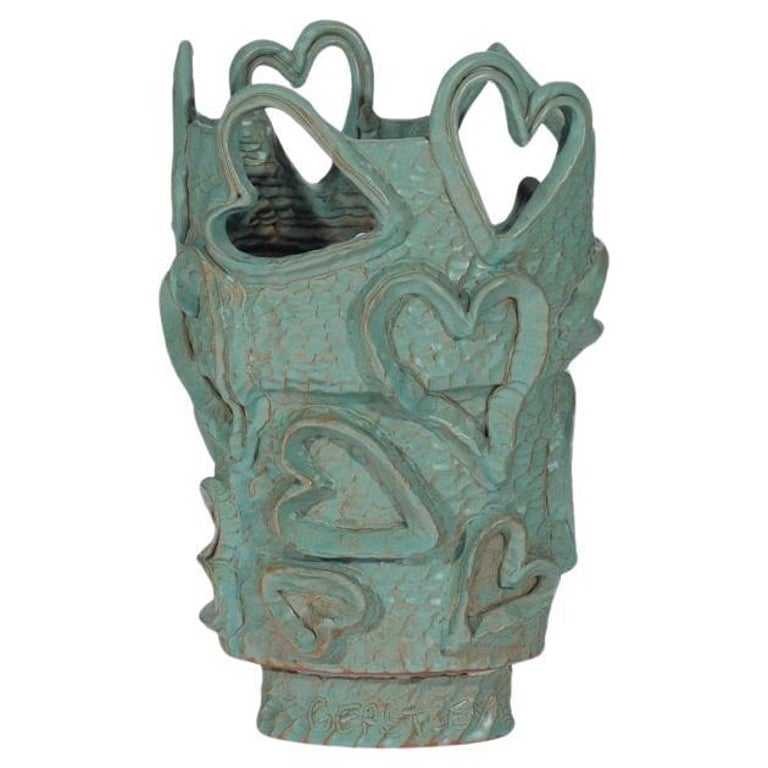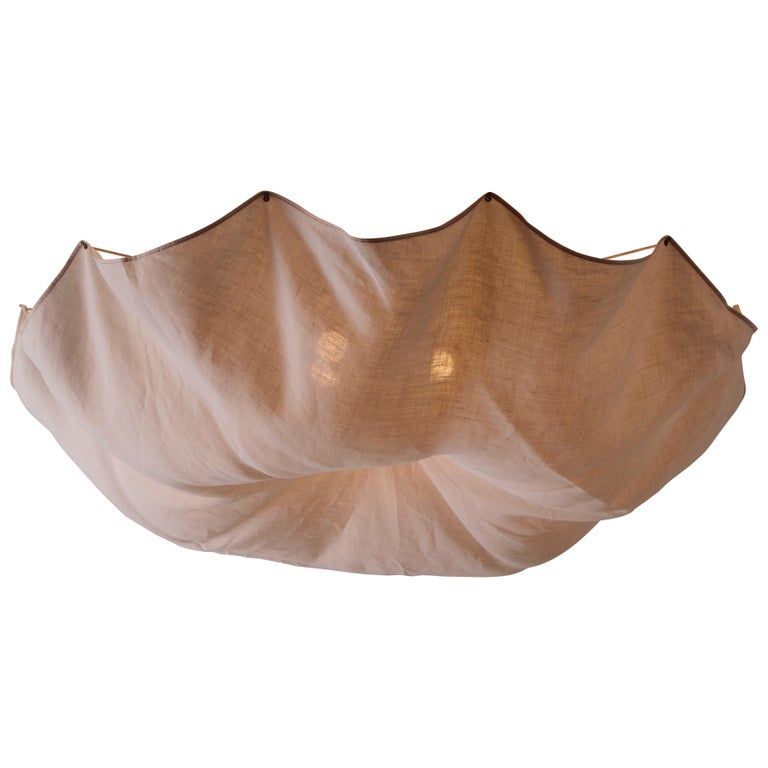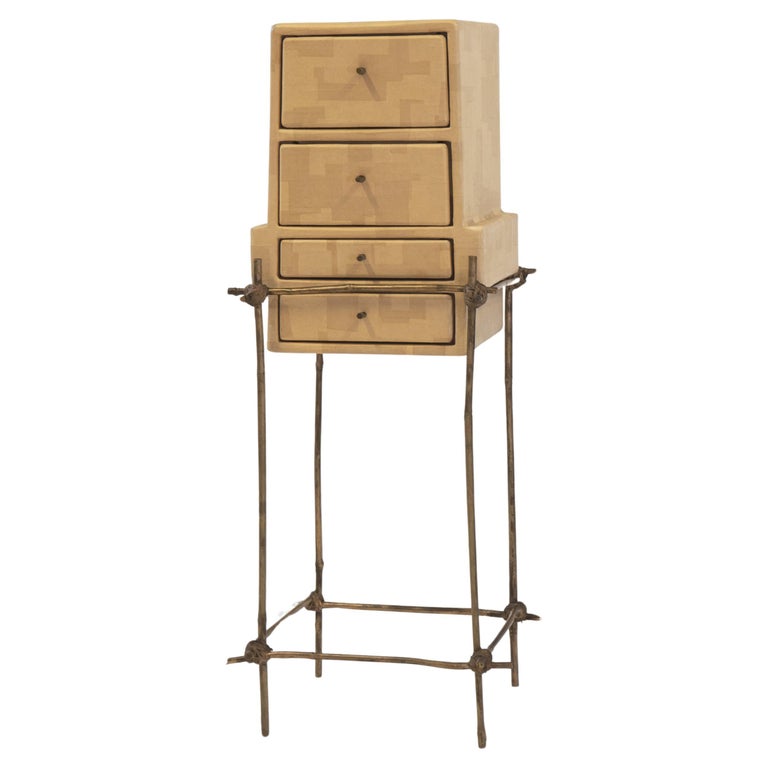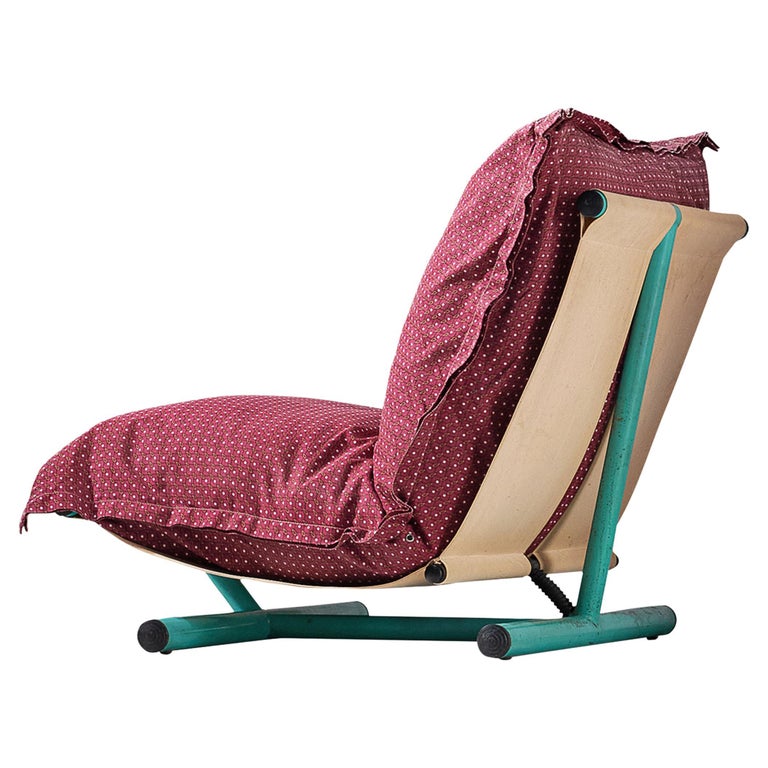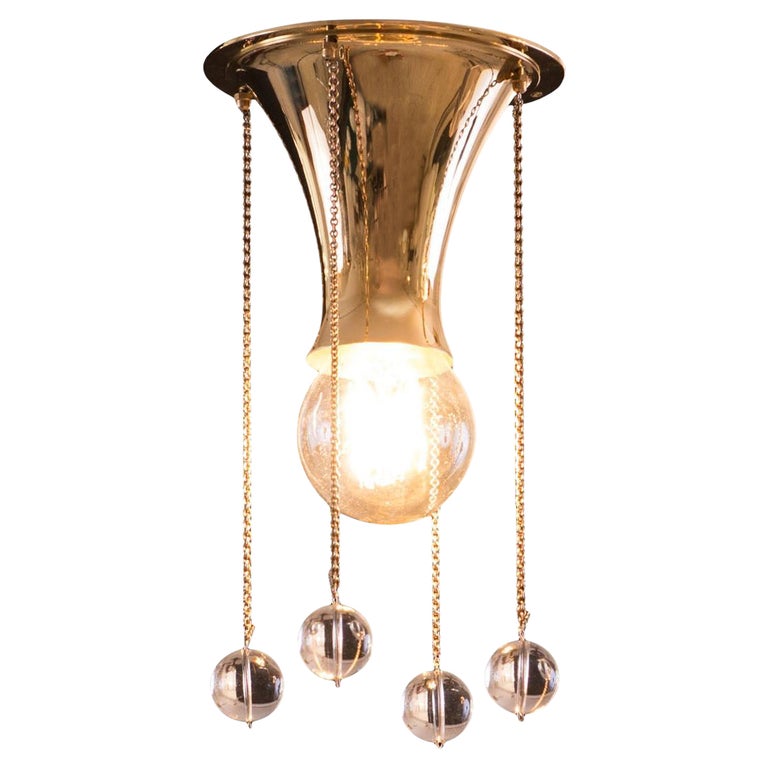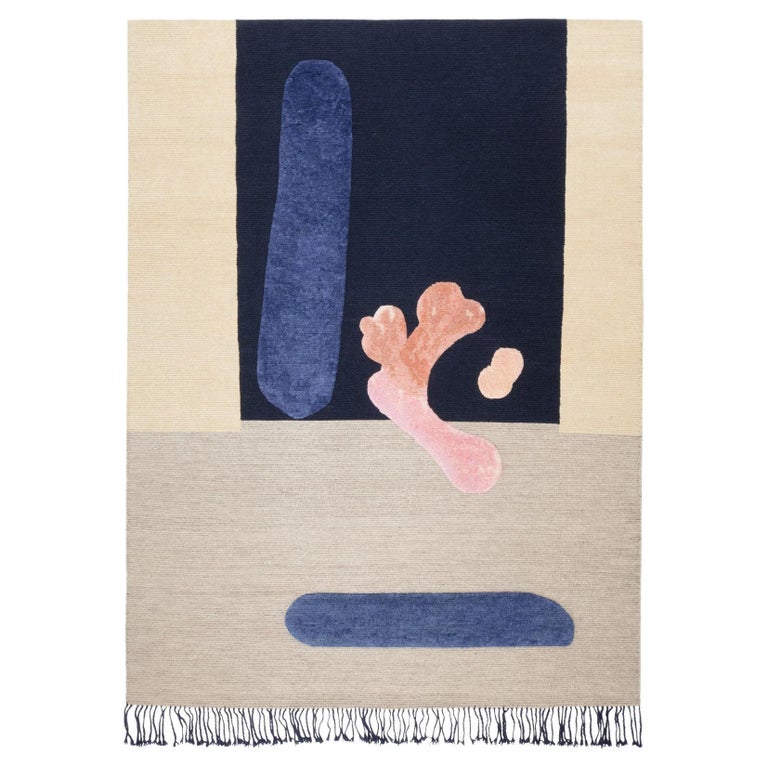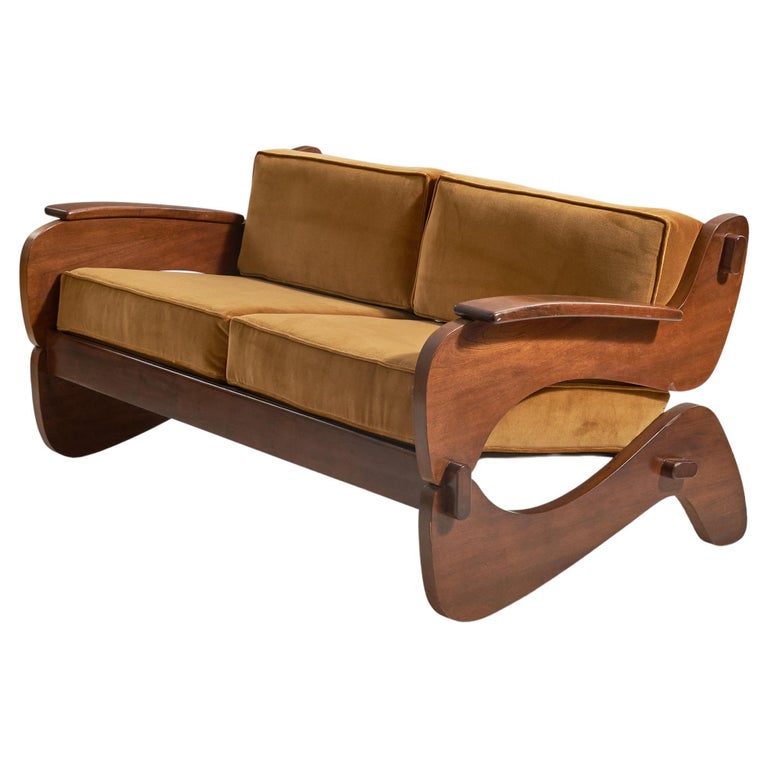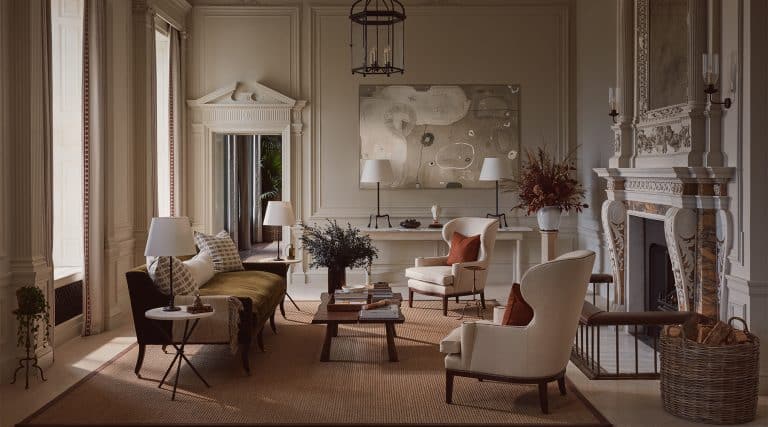March 23, 2025It’s no wonder that every room designed by Los Angeles’s Julia Sobrepeña King reflects a range of influences. She began her career working for — and learning from — Southern Californian stalwarts Kelly Wearstler, Michael S. Smith and Waldo Fernandez. Then, she did stints with the hip L.A. firm Commune and the San Francisco master Charles de Lisle.
By the time she opened Studio Roene, in 2021, she couldn’t imagine adopting just one style. (She christened the firm with a shortened version of her own given name, Roseline, itself derived from those of her grandmothers, Rose and Lina.)
In other words, King, who was born in the Philippines and moved to California at age 13, comes by her eclecticism honestly. But she doesn’t copy the work of any of her erstwhile employers. In fact, she says, she is more likely to break the rules she learned than to follow them.

Her goal, she explains, is to avoid almost anything that looks familiar, which is why she gives every room she touches at least one surprising feature. It might be an unexpected color combination or a particularly intriguing object — something, she says, “that’s unusual, something that will start a conversation.”
In the case of a house in L.A.’s Silver Lake neighborhood, the conversation begins at the front entry. King had the door — situated smack in the middle of a handsome craftsman-style facade — painted purple. She chose that hue, she says, for its uniqueness. “I thought about what color I’d never seen on a front door and went with that.”

Inside the house, the colors are generally more muted. “No one will come in and say, ‘I have to close my eyes, there’s too much going on,’ ” says King. But it’s something of a miracle that there are any colors at all.
The client had asked King to make the rooms neutral, meaning brown and beige. “I had to push her to be a little more adventurous,” says the designer, noting that her Filipino background inclines her toward bright colors. She tends to lead her clients, patiently, in that direction. “Luckily, the more things I showed her, the more she came to appreciate color.”
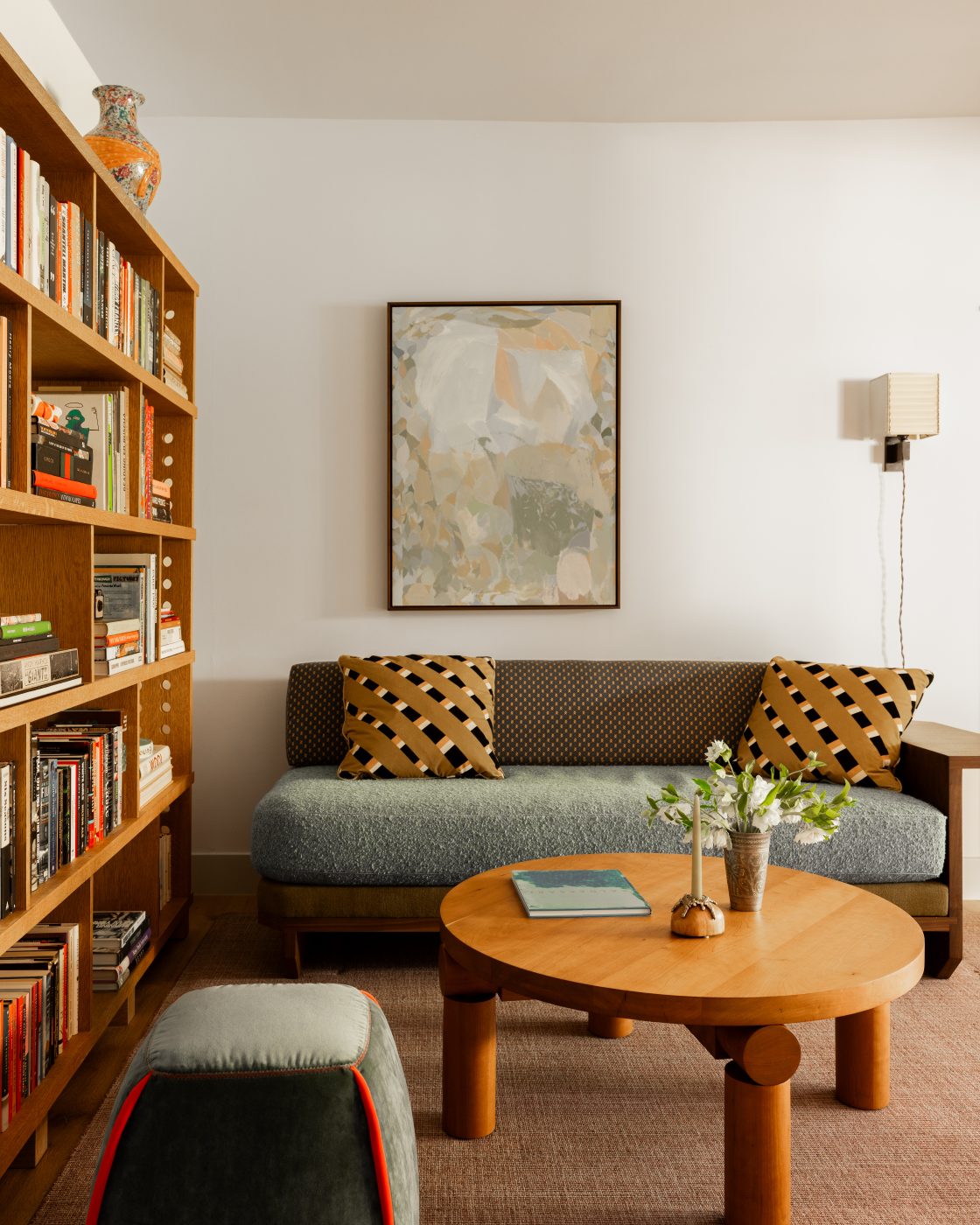

For the living room, King designed a rug that was originally going to be tan. But after months of conversation, King says, the client, a movie producer, agreed it could be green. In fact, the rug they settled on looks almost like a lawn.
Gathered on it are some mildly — not wildly — colorful pieces. A 1930s Art Deco–style armchair by Jindřich Halabala is upholstered in a pale green strié velvet. A vintage scalloped stool, also by Halabala and bought from Morentz, is blue. Most surprising, from the point of view of color, is a burnt-orange version of the 1970s Ciprea chair by the wife-and-husband designers Afra and Tobia Scarpa.

True, the custom-designed sofa and the window shades aren’t especially colorful. Neither is the coffee table, made by an unknown designer and found at Blend Interiors, but it attracts attention with its splayed horn legs and ceramic top. The Danny Kaplan table lamps from Lawson-Fenning, meanwhile, seem ready to spin like tops. Overall, the room suggests the client’s nascent love of hue.
In the dining room, a Persian rug sets the stage for accessories in muted tones, including a pink vase by Katherine Adams, near the window, and a purple blown-glass sculpture by Austin Fields, on the square travertine dining table. Another source of gentle colors: a polychrome glass tube lit from within, by the veteran Los Angeles artist Laddie John Dill.

The room’s furniture represents a grand tour of Europe — and of the ways opposites attract. The travertine dining table, which the client bought in Italy, is white and angular. But King didn’t look for white, angular chairs to go with it. “If something is boxy, I try to pair it with something curvy,” she says.
The chairs she ultimately settled on, purchased from 1stDibs, are dark and rounded. They’re also Italian imports, creations of the great mid-century designer Carlo de Carli. The USM Haller cabinets were made in Switzerland, and the brass and alabaster mobile chandelier is from Galerie Glustin Luminaires, in France. Because the row of cabinets is so orderly, King selected a chandelier that would bring a bit of asymmetry to the composition.


Some of the most striking colors in the house are in out-of-the-way spaces. King made a table with a bright-pink base the centerpiece of the home office. Otherwise, the room’s decor is sedate, with simple Scandinavian modern–style vintage wooden chairs, custom plywood cabinets and a brass Florian Schulz pendant from 1stDibs.
The pink table isn’t the boldest piece in the house. That would be the dresser King designed for the primary bedroom, covered entirely in a tiger-toned wood veneer that Ettore Sottsass created for Alpi in the 1980s. “There has to be at least one crazy fun thing in a room,” says the designer.

The owners of a mid-century modern ranch house in the Bay Area’s Marin County — he’s in finance, she’s an art adviser — asked King to make its rooms cheerful and even quirky, which jibed perfectly with her preferred aesthetic. Besides, the views outside, of the surrounding valley, are so compelling that only bright shades and intriguing shapes could keep the scenery from overpowering the decor.
So, it stands to reason that the living room, with the biggest windows and the most dramatic vistas, would have the highest concentration of attention-getting pieces.

A 1940s lounge chair in dusty lavender from Almond and Co. sports a back shaped like a ram’s head. And the sofa, from the 1970s, has an unusual mirror base that makes the rug seem to continue under it. It faces a grainy oak coffee table — by the Berkeley-based Rafi Ajl — whose top resembles one of the clouds visible through the big windows.
Nearby, two vintage chairs by Lou Hodges for the California Design Group have swoopy cutouts in their thick oak frames. Between them is a free-standing ashtray. “No one smokes in this house,” says King. “But I like its shape. And it captures a moment in time.”


The room’s lighting is as interesting, formally, as its furniture. The Isamu Noguchi Akari paper lantern in the corner is a delicate cascade of pyramids. And a Shogun table lamp by Mario Botta has a shade inspired by a Samurai helmet. Although each piece uses Japanese aesthetic traditions as a jumping-off point, they reflect very different sensibilities, illustrating the depth of King’s eclecticism.

The most offbeat piece of furniture in the library is a crisscross ceramic table that suggests a stack of Lincoln Logs, by Los Angeles maker Henry Kim. In the kitchen, there’s a custom copper hood over the stove and a bright green column supporting a peninsular counter. “A lot of clients want white kitchens,” King says. “OK, but I always want to throw in something unexpected.”

The dining room revolves around an odd combination of pieces — a set of ladder-back Shaker-style chairs, from an Oakland maker, surrounding a custom, capsule-shaped oak table. But the most compelling piece in the room is the ceiling light, made of pleated ash-veneered plywood with red powder-coated-metal downlights. It was purchased from London’s Tino Seubert.
King says the homeowners like humble materials, like plywood, and pops of color, which made this an ideal fixture. With its linear shape, she adds, it doesn’t distract from the art — the clients have a large collection of two- and three-dimensional works — but “it’s one of the first things you see when you walk into the house. So, we wanted something that would make a statement.”

The primary bedroom makes a statement despite — or perhaps because of — its relatively subdued colors. Vintage nightstands from de angelis hold a pair of green Minibox table lamps, by Gae Aulenti and Piero Castiglioni for Stilnovo, which resemble old movie projectors. Like the ram’s-head chair and the bright green column, King says, “they’re kind of weird, which is exactly why I like them.”
But weird items alone don’t make a room. King considers a project successful if the clients are surrounded by things they love. And if those things were — or look as if they were — collected over time, so much the better.
Mostly, King says, she wants the rooms to feel happy. Even with her long list of mentors, that’s something she figured out for herself.

